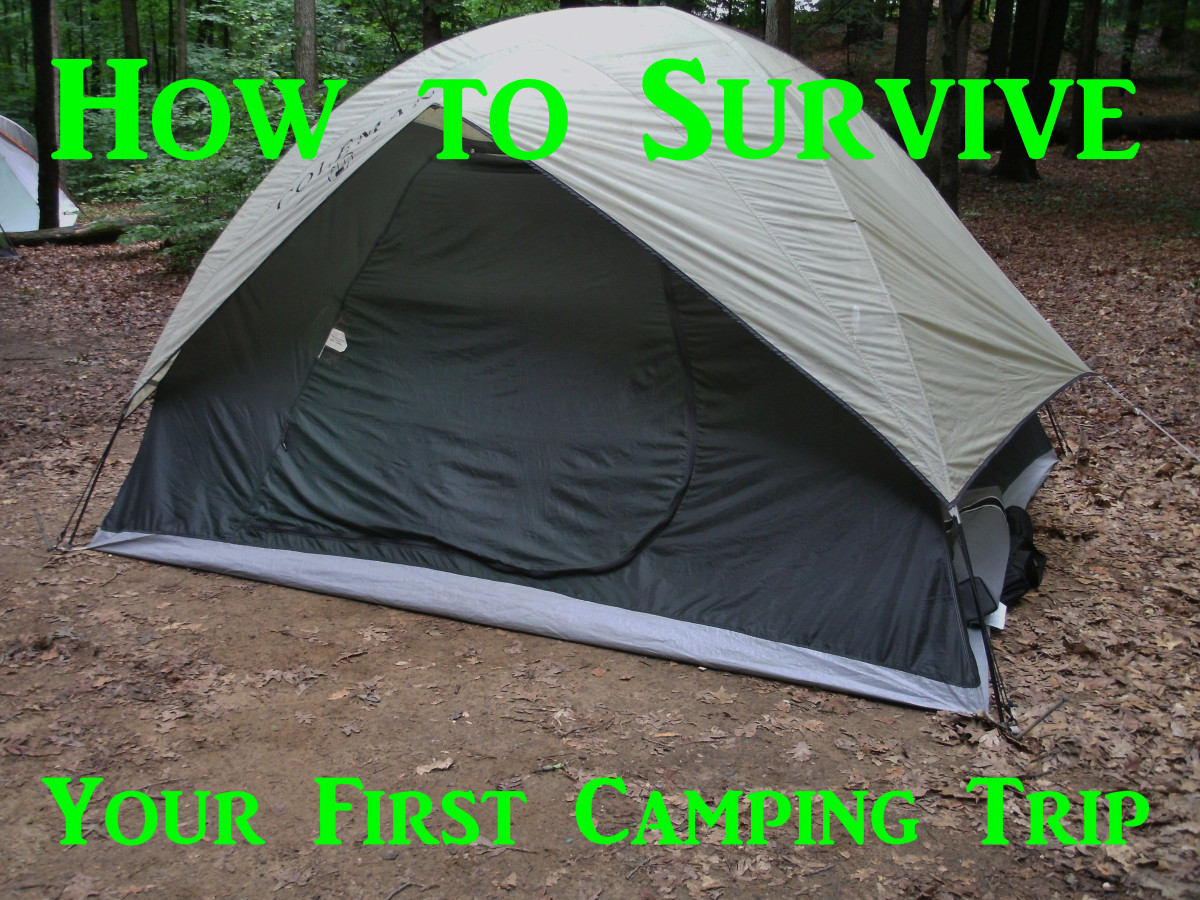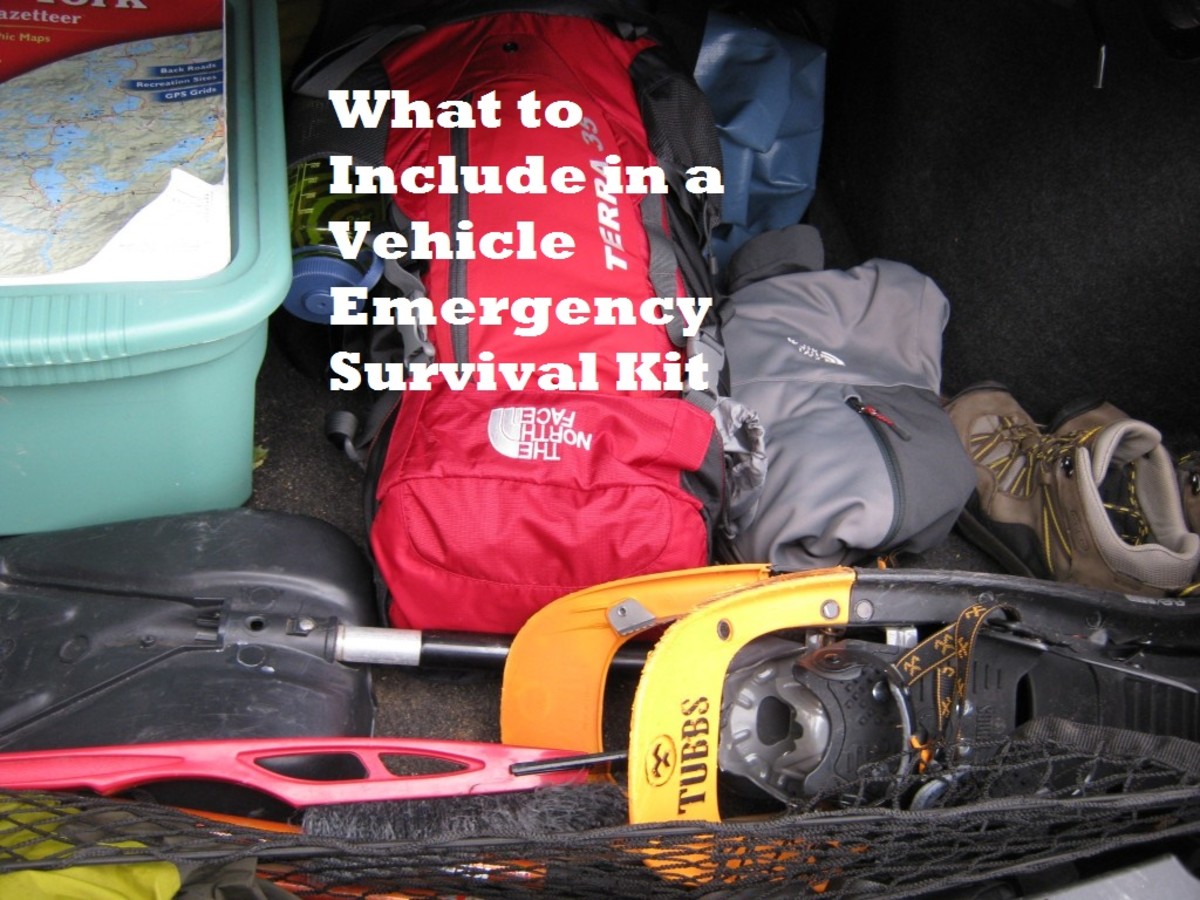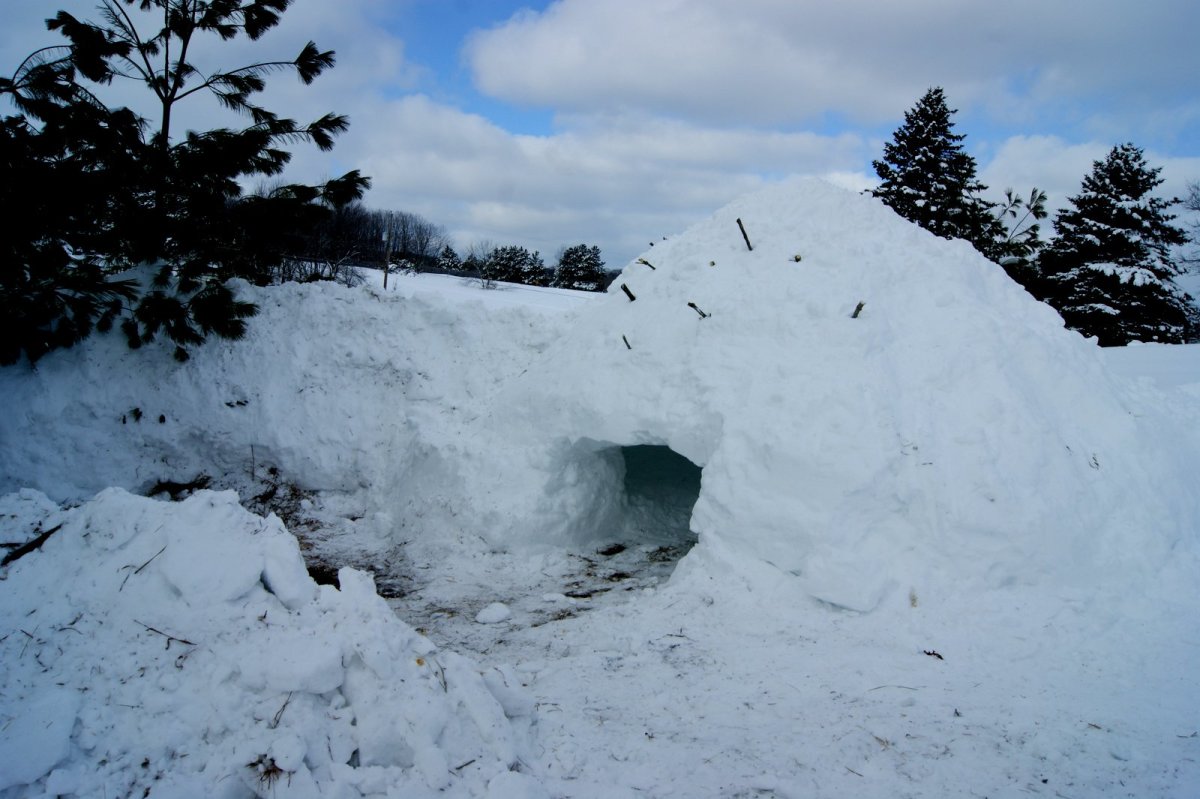Be Prepared for Any Disaster

Have a Bug-Out Bag for Any Occasion
I don't think there have been very many people in the country who have not been affected by the recent weather emergencies that have occurred during the past few years. We need to be ready for whatever our emergency situation calls for. Therefore It would behoove all of us to have some sort of bag containing at least the barest of necessities in the event of an emergency--whether it is a weather emergency or some other kind of emergency. The bag itself can be a canvas or nylon bag big enough to hold everything you need. Each member of the family should have his or her own bag and supplies. A backpack with many different compartments works well for this. It can be used to store the items that we buy specifically for emergency situations as well as items from our normal supplies that we supply for whatever the current emergency is. This bag can then be stored in a closet, to be used at home, or thrown in the trunk of the car when needed for a quick exit.
It is important to update this bag seasonally. In the summer, you won't need winter clothes and in the winter you won't need summer shorts so switch out clothing so that you will be comfortable no matter what the season. Additionally, kids grow out of clothes all the time so making sure that your child has the right sized clothes is also important.
Communication is Critical In Any Emergency
Most people do not think of their cell phones as a part of their survival bag, but perhaps it is time we did. As long as there is a cell tower nearby, a fully charged cell phone is a God-sent in emergency situations. Even if we were lost in the woods and don't know where we are, a call to 911 can often make the difference between life and death.
Today our phones even include compasses which can come in really handy when you want to be sure that you're not traveling in circles.
Another means of communication that is important having a plan in place of where to meet if a disaster occurs before an event occurs. For instance, what if there is an earthquake or a fire? Does your family have a designated place to meet? If some members of the family are at work, at school, or at home and some are elsewhere, what plans are in place for reconnecting after a disaster?
Having a what-if plan to meet at a specific location during a disaster will make it a less stressful situation and may also save the lives of your family members.
For Emergency Situations: Battery Powered, Solar, Hand-cranked Flashlight/NOAA Radio
Often, during a power outage, we think that all we need is a good flashlight, but a weather radio is also a must.
In many emergency situations such as when tornadoes threaten to blow down our homes, the electricity goes out and our television, our normal access to weather information is no longer available. I found that the Ambient Weather WR-111B Emergency Solar Hand Crank AM/FM/NOAA Digital Radio, Flashlight, Cell Phone Charger with NOAA Certified Weather Alert & Cables not only supplies me with life and death information but also provides me with other amenities such as light and music as well as a way to charge up my cell phone and other electronic conveniences such as my laptop and my kindle. It easily stores in my emergency bag and can even be used at non-emergency times such as at the beach or at a park.
Have an Emergency Basic First Aid Kit Handy
A first aid manual in your emergency bag is a must. Your first aid kit can be the first aid kit that you use all the time in your home. Store your medications in their original containers in it, and be sure that you have at least a four-day supply at all times. The best first aid bag is a zippered nylon bag. Be sure your first aid kit contains the following items:
- sunscreen, lip balm, and bug spray
- hydrogen peroxide, rubbing alcohol, iodine, and cotton balls
- triple antibiotic ointment and petroleum jelly
- tweezers, needles, safety pins, and a magnifying glass
- calcium and salicylic-based stomach medicine (or herbal equivalent)
- loratadine and diphenhydramine-based antihistamines (or herbal equivalent
- ibuprofen and acetaminophen (or herbal equivalent)
- benzocaine toothache relief (or herbal equivalent)
- antidiarrheal medicine, laxatives, and antipurgatives (or herbal equivalent)
- pseudoephedrine and guaifenesin cold remedies (or herbal equivalent)
- a variety of bandages and butterfly closures
- Gauze pads and first-aid tape
- 4 cloth slings and wood to make a splint
- hot and cold packs
- disposable gloves
- tongue depressors
- EMT trauma scissors
- powdered electrolyte replacement
- oral thermometer
- if you have children, be sure that you also have child-appropriate OTC medications as well
- Know how to use what is in your first aid kit. Preparations for basic first aid preparedness should include taking a CPR class and attending first responders training. Children can also learn emergency techniques.
Water Ready for an Emergency
The current recommendation for water is a gallon of water per person per day. We cannot live more than a few days without water, so it is necessary for an emergency situation to make sure that we have enough drinking water to get us through the situation. Most of us are within three days of some sort of water source, so having enough water for three days is a good rule of thumb. However, for emergency situations, we really don't need to store water for long periods of time.
With most emergency situations, we know ahead of time when emergency situations might occur. What isn't necessary to have ahead of time is the water, but it certainly does make sense to have containers available ahead of time. It makes sense to store collapsible water containers in our emergency bag and then fill them up just before you know that an emergency event could occur. You can also use this type of container to store water in the trunk of your car in case of emergencies when going on trips through desolate areas such as deserts or mountains.
In addition to the three days supply of water, it makes sense to store water purification straws in your emergency bag. These purification straws are lightweight and stored easily in your emergency bag. Use these for any situation when you are unsure that your drinking water is safe.
Even in an Emergency, We all Have to Eat!
Have enough food in your emergency bags for each person to eat for three days. The easiest type of emergency food to get are MREs or Meals Ready to Eat. Just as the name says, they are immediately ready to eat. These MREs are not necessarily your first go to food, but they will be there if you need a food source for a few days if you are away from normal food sources for a few days and do not have refrigeration available.
Emergency Clothing
Most of the time, we use the clothing that we have in an emergency. One item of clothing that I recommend storing, however, is a rain poncho. This rain poncho can be used in a number of emergency situations, not just as a raincoat. For one thing, it can be used to cover the ground or can be used to cover the door of an emergency shelter.
Just prior to a suspected emergency situation whether a weather event or if you expect to travel through a desolate area such as a desert, a mountain area, or in inclement weather, be sure to stow appropriate clothing into your emergency bags. Most of these items you do already have in your own closet. Remember that dry socks and comfortable walking shoes are a must.
Emergency Shelter
There may be a need to provide emergency shelter for yourself until rescued or you can provide a better situation for yourself and your family. Therefore, I recommend having a sleeping bag available for every person in the family. This will provide enough warmth for survival in most situations like electrical outages and being stuck in your car on a cold lonely road.
In addition, store tarps, some nylon rope, and duct tape for emergencies. Tarps can be used to cover a hole in the roof or used to cover broken windows. By using your imagination and whatever else is available, you should be able to figure out how to develop a shelter that will also keep you dry if necessary.
Adding onto These Emergency Basics
I am sure that you've noticed that I have not included a number of important things in this basic emergency bag. I haven't discussed anything about cooking, heating, or long-term survival situations. This basic bag is just that basic. It will keep you alive and somewhat comfortable for about three days or until help arrives. If you're looking at a survival situation for longer than that, you can still use this emergency bag to provide the basics while you are getting your bearings. For this scenario, however, you would want to add survival tools like a survival knife, a fire starter, fish hooks, a hatchet, a rifle, a crossbow, or whatever, but everything listed here in a basics emergency bag would not be a waste even with that scenario.
This content reflects the personal opinions of the author. It is accurate and true to the best of the author’s knowledge and should not be substituted for impartial fact or advice in legal, political, or personal matters.
© 2013 Cygnet Brown








